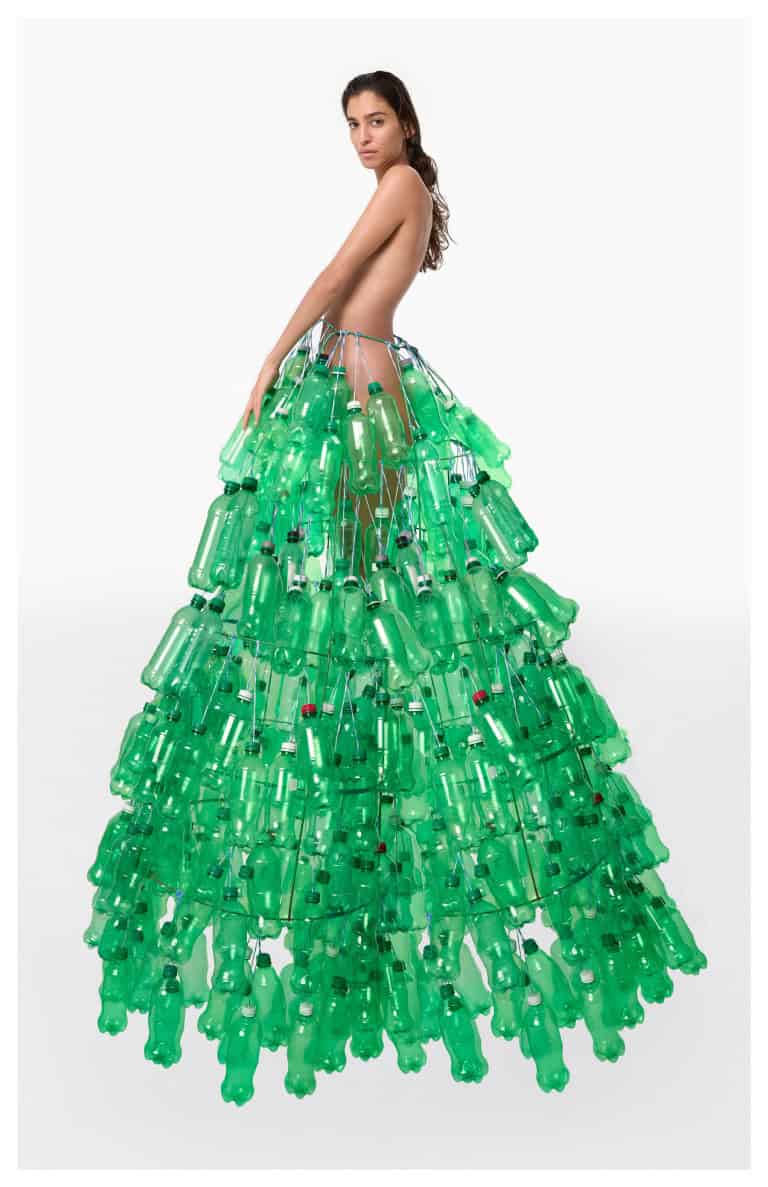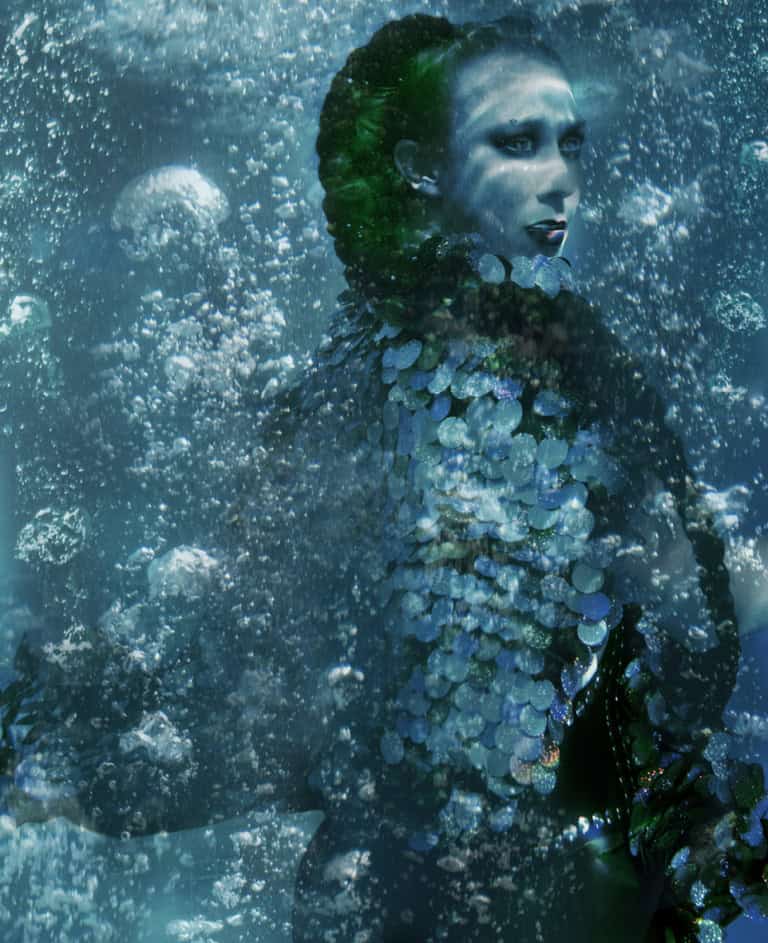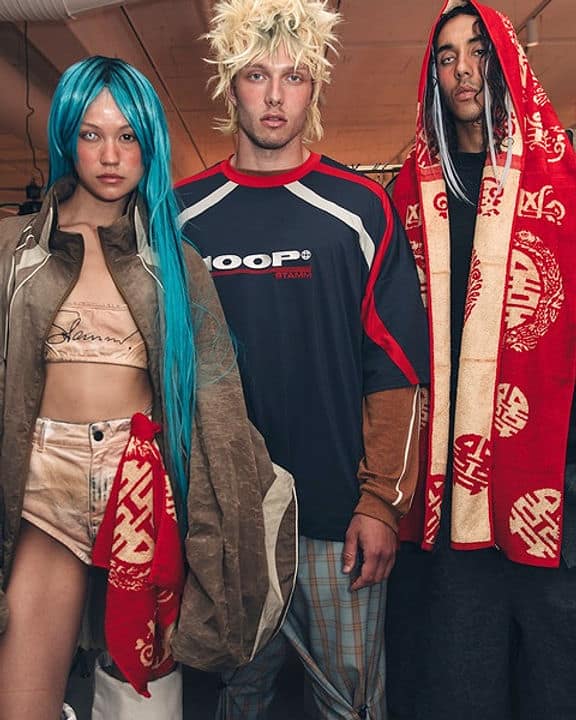
Returning New Talent at Copenhagen Fashion Week
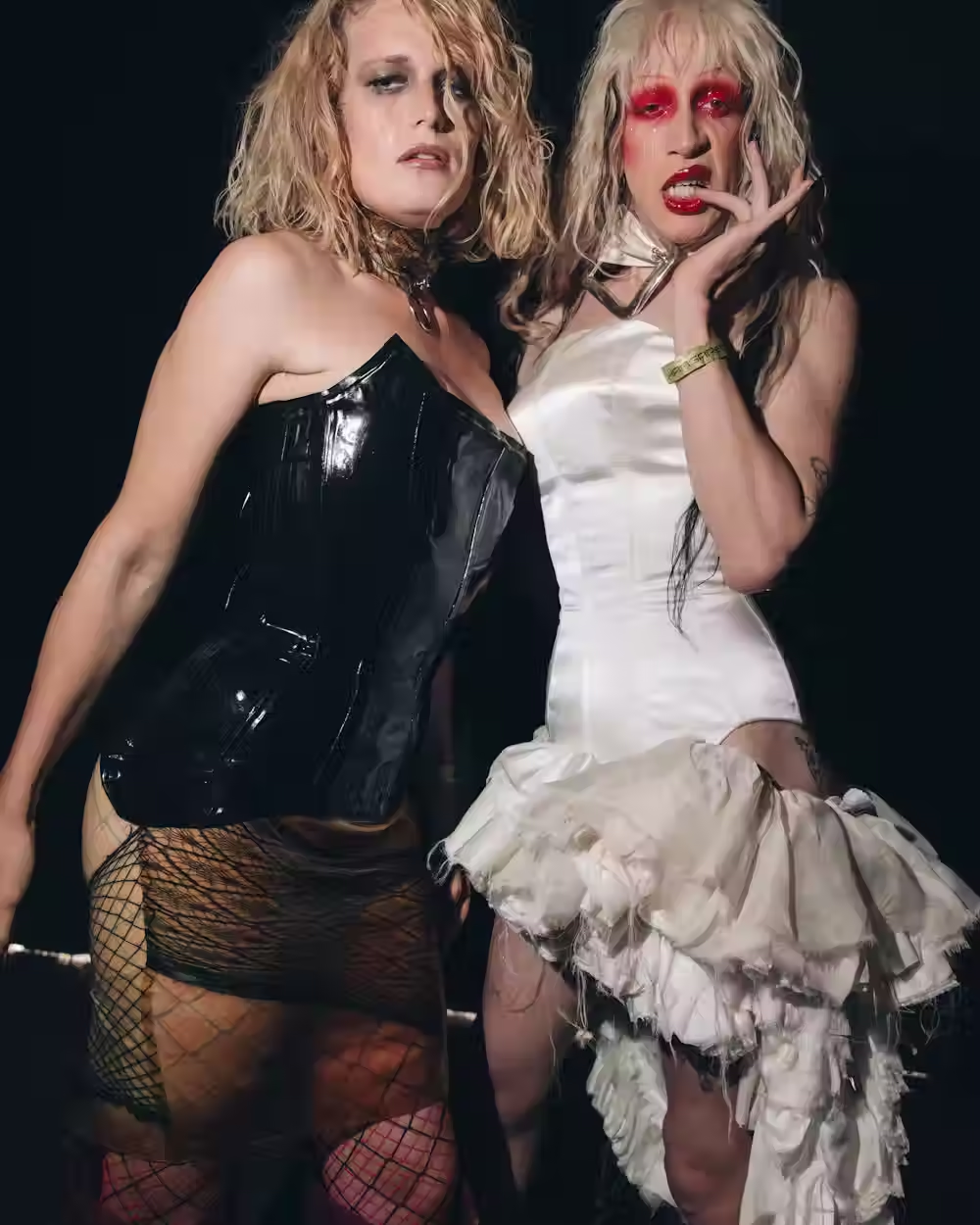
Copenhagen Fashion Week (CPHFW) Autumn/Winter 2025 will take place from January 27th to 31st. Maintaining its commitment to nurturing and promoting emerging Nordic talent on a global stage.
Central to this mission is the CPHFW NEWTALENT initiative. It offers critical support to three to five emerging designers each season. The program provides monetary backing, mentorship, partnerships, professional guidance, and inclusion in the official show and presentation schedule. Additionally, designers gain access to event participation, showroom activations, an alumni network. As well as international publicity through Copenhagen Fashion Week’s extensive channels.
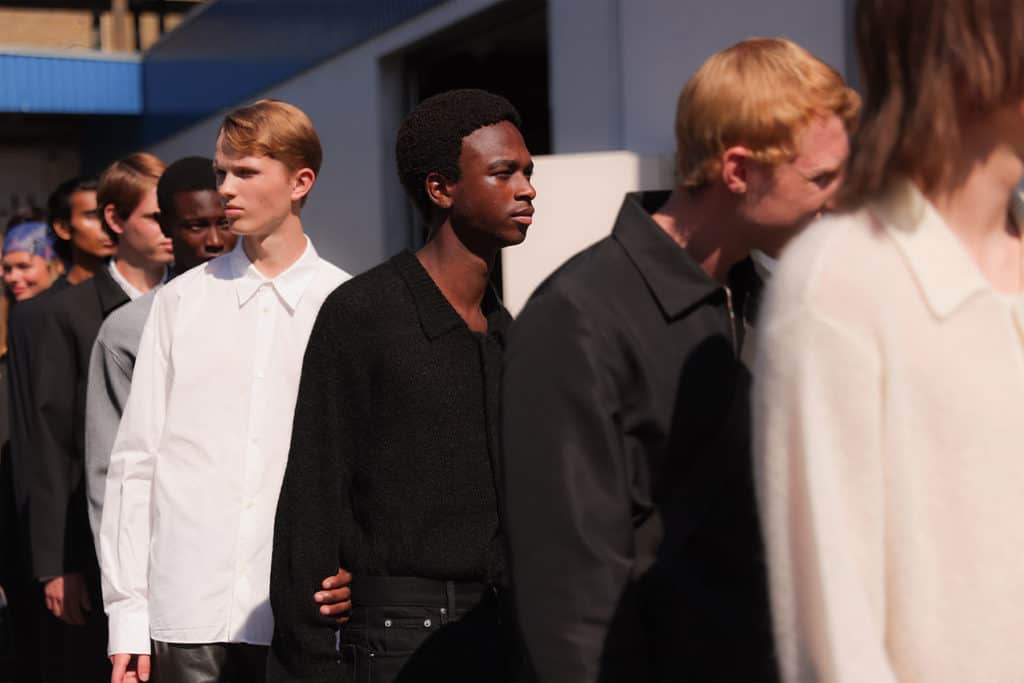
The NEWTALENT initiative spans three consecutive seasons, offering designers sustained exposure and resources to build their brands. Upon completing the program, designers transition into the alumni network, which continues to provide opportunities for showcasing, events, networking, and business development. Alumni also benefit from communication and sponsorship support, ensuring they remain part of Copenhagen Fashion Week’s evolving community. This structured framework positions Copenhagen Fashion Week as a leading platform for fostering innovation and global visibility for Nordic design.
Masculina
Returning for her third season under Masculina, Alectra Rothschild presents Spring 2025: You Are Wasted Here, You Are a Star, a collection that directly addresses the societal marginalization of trans individuals. “We are wasted in this world because we disproportionately experience discrimination, homelessness, joblessness, and violence for simply existing—and are obviously not appreciated for the stars we are,” Rothschild states.
The collection examines intimacy and platonic love, expressed through garments that blur the line between private and public spaces. Drawing from the 1920s boudoir aesthetic and Erté’s iconic silhouettes, Rothschild creates a narrative of transformation, from the ritual of preparing oneself at a vanity to the moments of camaraderie shared with friends after a night out. “Is it vanity, or your sanctuary?” she asks, framing the collection in a space of transition—between the club and home, glamour and vulnerability.
The designs juxtapose delicate, romantic nightgowns with bold, provocative club wear, incorporating racer-inspired garments like jackets and pants. Techniques such as ruffles, deconstruction, slashing, and corsetry dominate the collection, with Rothschild crafting her own latex from scratch. Sustainability remains a key focus: materials include Oleatex (a leather alternative made from recycled polyester and olives), dead-stock lace and silk, and up-cycled fabrics and garments, reinforcing thier commitment to reducing waste while pushing the boundaries of fashion’s materiality.
The result is a collection that is both deeply personal and socially reflective, addressing the realities of trans life while celebrating beauty, resilience, and the transformative power of self-expression. Rothschild’s work continues to challenge conventions, asking not only how we see fashion, but how we see each other.
STAMM
Founded in 2022 by Danish designer Elisabet Stamm, the Scandinavian brand Stamm has quickly established itself on the global fashion stage. Announced as the winner of the ZSA Zalando Sustainability Award following its debut AW23 runway show at Copenhagen Fashion Week, Stamm has positioned itself as a forward-thinking brand committed to sustainability and innovation.
For Spring 2025, Stamm continued to explore her self-described approach of “truck poetry,” an aesthetic rooted in contrasts: strength versus sensitivity, couture juxtaposed with functionality, and a high-fashion sensibility informed by practicality. With her emphasis on connection, Stamm integrates “exchange” as a key element of the brand, reflecting her belief in the importance of cross-cultural conversations and diverse perspectives.
The Spring 2025 collection builds on Stamm’s love for layered storytelling through material and form. “That’s what I love about fashion,” Stamm explains. “To me, it’s mostly felt when it’s created from layers. It’s the greatest playground for storytelling and the substance of materials.” This season’s textiles underscore Stamm’s commitment to sustainable innovation. A standout piece, a strong-shouldered coat, combines 50% banana linen with 50% dyed Japanese paper, showcasing her ability to merge unconventional materials into wearable designs. The collection also features GOTS-certified Tencel and wool used in body-conscious silhouettes, as well as heavy organic twill jackets and coats treated with a carbon overdye technique.
Stamm’s work exemplifies the potential of sustainable fashion to balance material innovation with a cohesive design narrative. By blending tactile experimentation with an emphasis on meaningful exchange, Stamm challenges traditional notions of Scandinavian design while remaining rooted in a global perspective.

Frederik Berner Kühl
Frederik Berner Kühl, the designer and founder of Berner Kühl, returns for his second appearance in the CPHFW NEWTALENT program. This season he offers a refined focus on material-driven menswear. With a background in production and an MA from Polimoda in Florence, Kühl’s approach to design begins with the fabric itself. “My ideas solidify into materials, which then drive the actual design,” the designer explains.
For Spring 2025, Berner Kühl builds on the concept of a modular wardrobe, a cornerstone of the brand’s philosophy. The collection explores modularity by offering the same style in different materials and reimagining familiar shapes through varying perspectives. This approach not only highlights the versatility of design but also challenges conventional consumption practices, encouraging the idea of “less, but better.” Kühl describes this as an effort to educate consumers on the value of quality over quantity.
Material innovation lies at the heart of the collection. Berner Kühl focuses on maximizing the potential of raw materials during the fabric development phase. Allowing the inherent qualities of the fabric to determine the final design. The result is a lineup of garments that emphasize texture and craftsmanship—crafted to endure and provide lasting utility—whether as “shelter or uniform,” as Kühl puts it. Sustainability is a core principle for the brand. The Spring 25 collection relies heavily on dead-stock fabrics, aligning with Kühl’s belief in making the most of existing resources. “We must consider how to dress in a future with fewer resources,” he says. “Scarcity and restraint present new opportunities.”
By combining modularity, material innovation, and sustainable practices, Berner Kühl’s Spring 25 collection redefines menswear essentials. As well as invites a deeper dialogue about how we consume and value fashion in an era of limited resources.
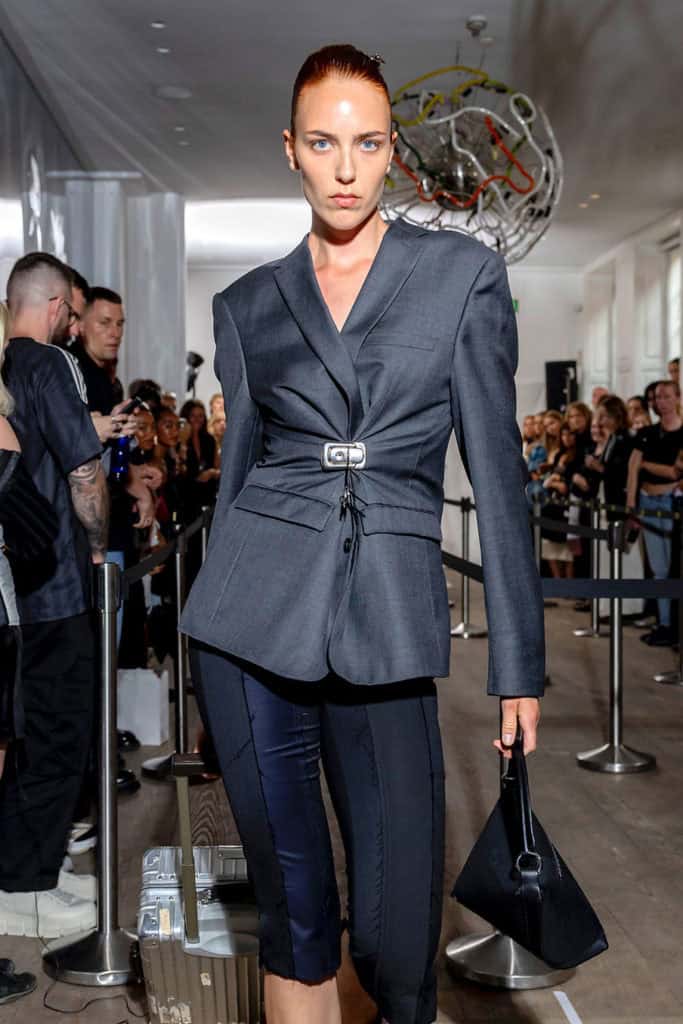
BONNETJE
Bonnetje, the Copenhagen-based brand founded in 2021 by Anna Myntekær and Yoko Maja Hansen, continues its exploration of circular fashion. Emerging from a shared foundation in artistic preparation in Copenhagen, the duo built their expertise through studies at Gerrit Rietveld Academie in Amsterdam and internships in Paris. Their craftsmanship was honed at renowned houses such as Maison Margiela, Balenciaga, and Cecilie Bahnsen. Under the guidance of John Galliano, Myntekær and Hansen further developed their skills in tailoring, pattern-making, and sewing. These foundations are central to Bonnetje’s distinctive approach to reworking existing garments.
Bonnetje’s latest collection reimagines dressing in motion, celebrating the fleeting moments of getting dressed on the go. It explores the lived experience of clothing—how it folds, wrinkles, or wraps imperfectly when life demands speed. At its core, the collection honors how clothing adapts to fast-paced living. By repurposing old suits, it creates silhouettes that feel both worn and refreshed, merging practicality with a sense of renewal. “It’s not just slow fashion because it prolongs the life of garments,” the designers explain. “It’s slow fashion for those who resist the tempo of modern life.”
The Spring 2025 collection emphasizes Bonnetje’s commitment to circularity and sustainability. By deconstructing and reassembling defunct tailored pieces, they reveal hidden elements like seams, pockets, and linings, exposing the craftsmanship that often remains unseen. Masculine tailoring is reshaped with feminine curves, creating fluid, inclusive forms that challenge traditional fashion codes. Rather than discarding the past, Bonnetje integrates it into the present, creating garments that are as much about memory as they are about reinvention.
Collaboration between VENCZEL and BONNETJE
Collaboration remains central to Bonnetje’s ethos. This season, the brand partnered with Swedish luxury label VENCZEL to create three sculptural bags that incorporate their up-cycled suits. Using VENCZEL’s signature saddlery techniques, surplus leather frames the asymmetrical patterns of suit fabrics, creating a striking fusion of tailoring and accessory design. Models like the ÈLAN, VEIRON, and AERA have been reimagined with layered, sculpted details that echo Bonnetje’s philosophy of reuse.
While Bonnetje doesn’t claim to solve the fashion industry’s sustainability challenges, their work contributes to a larger conversation about the potential of circular practices. By transforming discarded garments into thoughtful, wearable designs, Bonnetje offers a poetic yet practical vision for a more enduring approach to fashion—one that preserves the past while adapting to the present.
This collection isn’t just about garments; it’s a statement on the possibilities of fashion when it slows down, reflects, and reassembles itself. As Central Europe prepares for the forthcoming fashion season, Bonnetje’s showcase stands as a compelling reminder of what can be achieved when creativity and sustainability intersect.
Patrick Michael Hughes Senior Fashion Editor Men’s Fashion Writer
Backstage Photography by Tonya Matyu, Bryndis Thorsteinsdottir and James Cochrane
Share this post
Patrick Michael Hughes is a fashion and decorative arts historian. He writes about fashion culture past and present making connections to New York, London and Copenhagen's fashion weeks with an eye toward men's fashion. He joined IRK Magazine as a fashion men's editor during winter of 2017.
He is often cited as a historical source for numerous pieces appearing in the Wall Street Journal, The New York Times, CNN, LVMH, Conde Nast, Highsnobiety and others. His fashion career includes years as a fashion reporter/producer of branded content for the New York local news in the hyper digital sector. Patrick's love of travel and terrain enabled him to becoming an experienced cross-country equestrian intensively riding in a number of locations in South America Scandinavia,The United Kingdom and Germany. However, he is not currently riding, but rather speaking internationally to designers, product development teams, marketing teams and ascending designers in the US, Europe and China.
Following his BA in the History of Art from Manhattanville College in Purchase, New York he later completed graduate studios in exhibition design in New York. it was with the nudge and a conversation in regard to a design assignment interviewing Richard Martin curator of the Costume Institute at the Metropolitan Museum of Art he was encouraged to consider shifting his focus to the decorative arts with a concentration in fashion history and curation.
Patrick completed graduate studies 17th and 18th century French Royal interiors and decoration and 18th century French fashion culture at Musée Les Arts Decoratifs-Musée de Louvre in Paris. Upon his return to New York along with other classes and independent studies in American fashion he earned his MA in the History of Decorative Arts and Design from the Parsons/Cooper Hewitt Design Museum program in New York. His final specialist focus was in 19th century English fashion and interiors with distinction in 20th century American fashion history and design.
Currently, he is an Associate Teaching Professor at Parsons School of Design leading fashion history lecture-studios within the School of Art and Design History and Theory,
Read Next


